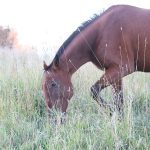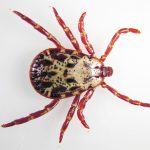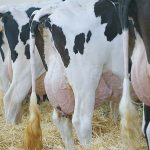The nervous system is a truly remarkable biological achievement. However, the features that protect it can also contribute to harm in cases of disease.
Tag Archives Animal Health column

Pain control at castration in calves has obvious benefits
A recent survey on pain mitigation at castration yielded highly encouraging results
You probably won’t make money by using pain control, but your calves will feel better, pair up faster and you’ll be doing something that promotes animal welfare in your industry.

Approach to horse hoof care has evolved over the years
Hoof care has been deeply influenced by the barefoot movement, which emerged as a response to the limitations of traditional horseshoeing
Hoof care has been deeply influenced by the barefoot movement, which emerged as a response to the limitations of traditional horseshoeing

Increased iron dose can help prevent anemia in piglets
Increased iron dose can help prevent anemia in piglets
Veterinarian Blaine Tully looks at the importance of iron in the health of piglets.

Managing lameness in cattle can mean tough decisions
In cow calf production, lameness is second only to reproduction for culling criteria. It impacts all levels of the production cycle, and in the long term, it can become an animal welfare issue. Cow-calf producers must prevent and treat lameness and provide an area with feed and water close by where convalescence can occur. If […] Read more

Climate change will have negative effects on animal health
We can expect climate change to have effects on animal health in many different ways. Indeed, there is already evidence that the warming and altered climate affects disease dynamics in important ways. At its most basic level, climate change has increased global temperatures, and this will continue and accelerate, given our current trajectory. Heat stress […] Read more

Salmonella dublin becomes more common in Canada
The technology gender-types embryos before they hatch, avoiding the standard practice of euthanizing day-old male chicks
Most of us are familiar with salmonella bacteria as a potential cause of gastrointestinal disease in humans. The severe diarrhea, abdominal pain, fever, headaches and dehydration can cause serious consequences in people, especially in the elderly and young children. However, there are numerous strains of salmonella bacteria, and some of them are adapted to cattle […] Read more
Removing extra teats is usually a good idea if possible
The other day I saw supernumerary teats in the middle or intercalary position — between the normal teats on an udder — on a bred heifer close to calving and it got me thinking. Are these of much significance and what have I done with them in practice? Are there many negatives or can we […] Read more

Sustainability becomes critical factor in vet medicine
Without a doubt, environmental issues such as pollution, climate change and habitat loss impact animal health. Our collective future depends on finding new and better ways to tread lightly on our delicate planet. Environmental stewardship is a key pillar of the veterinary profession. The Canadian veterinary oath even includes the provision that “I will strive […] Read more

Cache Valley Virus can be difficult to prevent in sheep flocks
In the past few weeks, Prairie Diagnostic Services in Saskatoon has had some confirmed cases of stillborn and aborted sheep fetuses diagnosed with Cache Valley Virus, a mosquito-borne disease. The virus is widely distributed in mosquito populations throughout North America and in parts of Central America. It was first identified in 1956 in mosquitoes collected […] Read more




